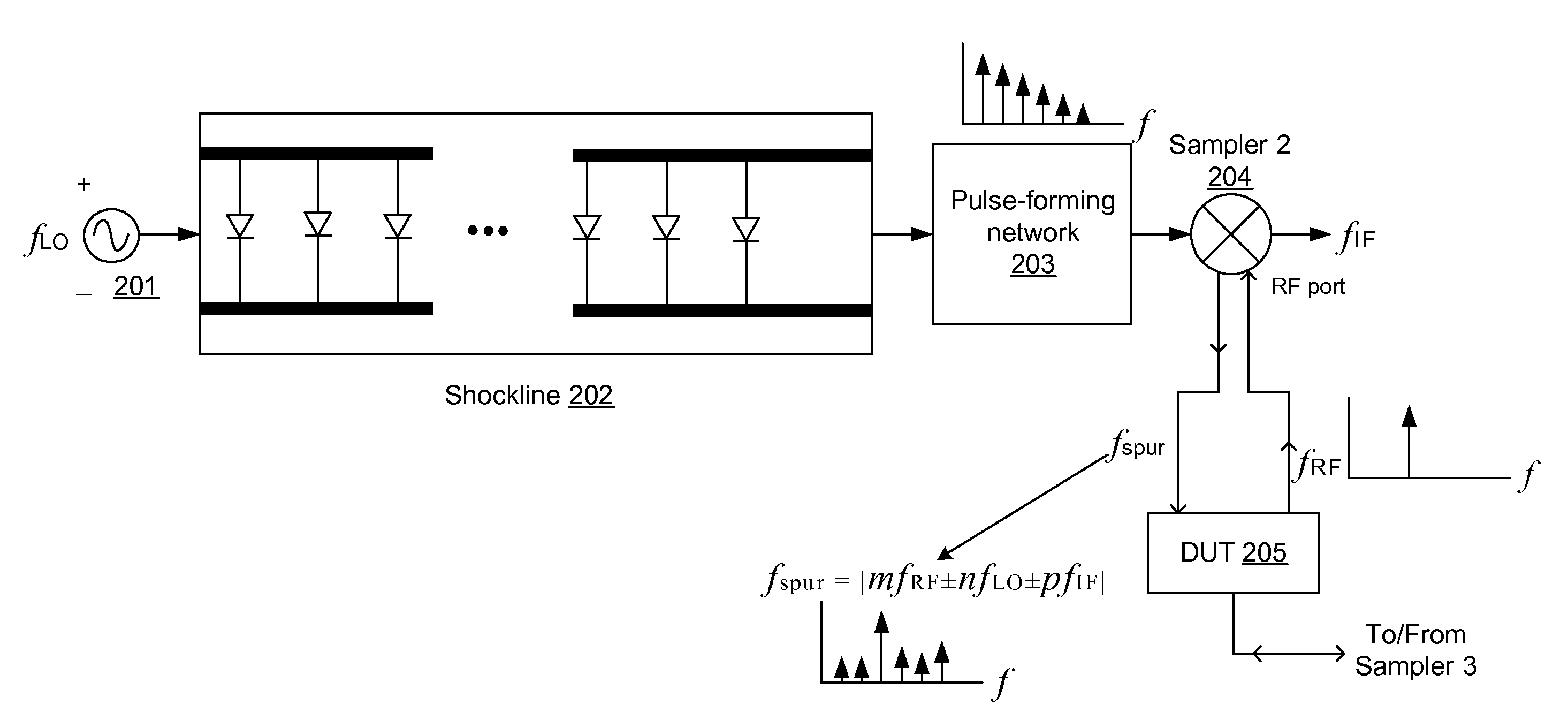Apparatus for enhancing the dynamic range of shockline-based sampling receivers
a technology of dynamic range and receiver, applied in the direction of resistance/reactance/impedence, instruments, transmission monitoring, etc., can solve the problems of limiting the dynamic range of vna, performance items are still an issue, affecting the accuracy of measurements, etc., and achieve the effect of reducing channel-to-channel isolation and enhancing the dynamic range of shockline-based sampling receivers
- Summary
- Abstract
- Description
- Claims
- Application Information
AI Technical Summary
Benefits of technology
Problems solved by technology
Method used
Image
Examples
Embodiment Construction
[0025]FIG. 3 shows a vector network analyzer (VNA) with components included according to embodiments of the present invention. Source Generator 300 provides a source signal to power splitter 302. The power splitter splits the source signal into separate signals for driving test and reference channel samplers. Two test channels and two reference channels are utilized in the embodiment shown, but any number of channels may be used, depending on the design of the VNA. In each channel a nonlinear transmission line (NLTL), or shockline, receives the LO signal from the power splitter 302 and produces a pulse signal. The pulse signal is then used to gate a sampler 312-318.
[0026]Embodiments of the present invention in FIG. 3 include dynamic shock-line biasing circuit for enhancing the dynamic range of the sampling VNA. Each shockline is dynamically biased using a dynamic bias circuit 358-364. In one embodiment the bias voltage of the shockline is controlled to improve performance. The biasi...
PUM
 Login to View More
Login to View More Abstract
Description
Claims
Application Information
 Login to View More
Login to View More - R&D
- Intellectual Property
- Life Sciences
- Materials
- Tech Scout
- Unparalleled Data Quality
- Higher Quality Content
- 60% Fewer Hallucinations
Browse by: Latest US Patents, China's latest patents, Technical Efficacy Thesaurus, Application Domain, Technology Topic, Popular Technical Reports.
© 2025 PatSnap. All rights reserved.Legal|Privacy policy|Modern Slavery Act Transparency Statement|Sitemap|About US| Contact US: help@patsnap.com



